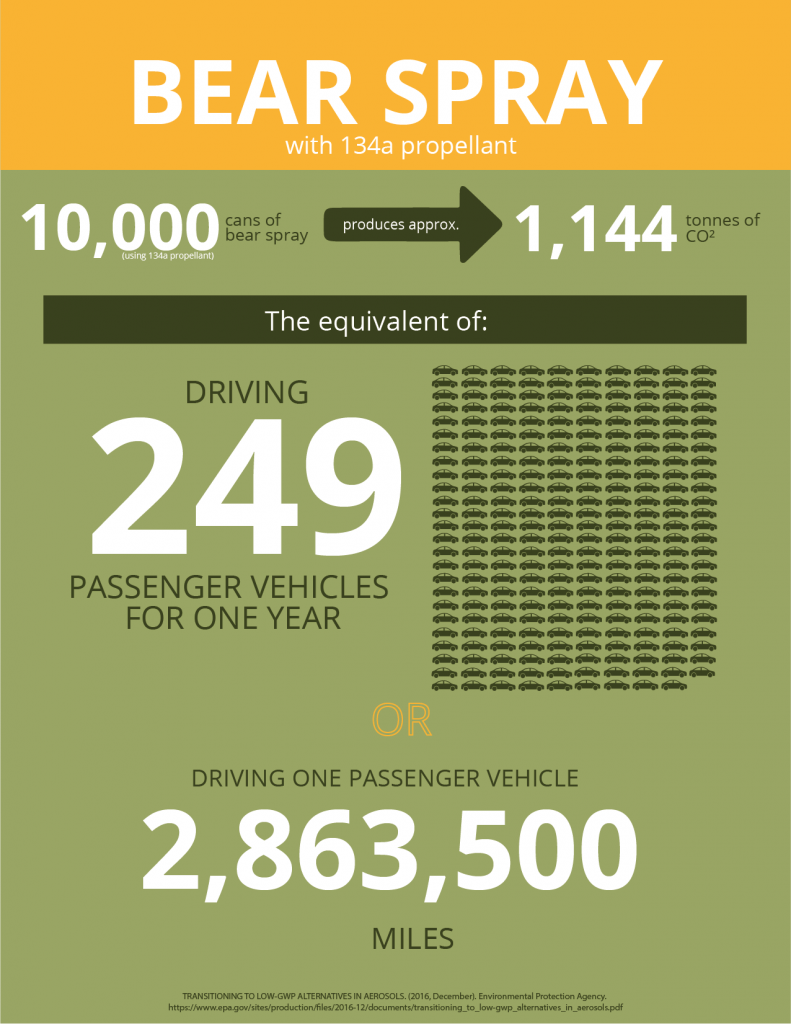Current Bear Spray (134a propellant)
GWP = 1,430
Bear Sprays that use the 134a propellant have a Greenhouse Gas Effect of 1,430x that of CO2.
Counter Assault Low-Emission Bear Spray
GWP = 150
Counter Assault Bear Spray uses a new propellant that has a Greenhouse Gas Effect of 150x that of CO2.
The most readily available bear sprays on the market still use 134a as a propellant, which has a significantly higher Greenhouse Gas Effect compared to the new alternative. At Margo Supplies, we are proud to carry Counter Assault Low Emission Bear Spray, a major innovation in bear deterrent technology.







